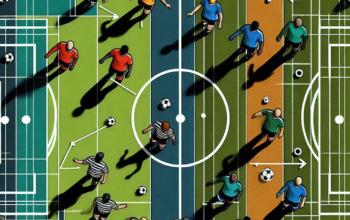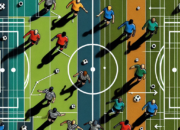The world of sports has evolved beyond raw talent and hard training. Today, technology plays a significant role in shaping the performance of athletes across all levels—from amateurs to elite professionals. Sports tech gadgets have become powerful tools that provide deep insights, optimize workouts, monitor health, and even prevent injuries. As innovation continues to surge, the integration of smart wearables, real-time data analysis tools, and AI-powered performance enhancers is fundamentally transforming how athletes train and compete. These devices aren’t mere accessories; they’re strategic components of modern athletic development.
Wearable Technology Enhancing Training Performance
Wearable technology has emerged as one of the most essential components of sports performance. From smartwatches and fitness trackers to specialized gear like biometric shirts and sensor-embedded insoles, athletes now have access to detailed performance metrics that were once impossible to measure accurately. These gadgets track key indicators such as heart rate, VO₂ max, blood oxygen levels, calorie burn, recovery rates, muscle activity, and sleep quality.
Take, for example, smart compression clothing. These garments are embedded with sensors that monitor muscle movement and fatigue in real time. Athletes can detect imbalances, improve form, and reduce the risk of overuse injuries. Likewise, GPS-enabled devices allow for tracking distance, speed, elevation, and movement patterns during training sessions. Coaches use this data to adjust drills, regulate load intensity, and create customized training plans for peak conditioning.
Wearables also support recovery strategies. Devices like the WHOOP strap analyze sleep cycles, recovery strain, and stress levels to determine when an athlete is physically ready for their next session. This data-driven approach minimizes burnout and ensures consistent progress without unnecessary strain.
Another powerful use of wearable tech is in sports like cycling or running, where aerodynamic positioning and gait can directly impact performance. Smart glasses or head-mounted displays provide real-time feedback, allowing athletes to tweak their form mid-activity. These tools help build discipline and self-awareness, especially when working without a physical coach present.
Smart Equipment Driving Precision and Safety
In addition to wearables, sports tech has significantly advanced in terms of smart equipment designed to improve technique, efficiency, and safety. From smart basketballs and tennis rackets to AI-analyzed treadmills and connected golf clubs, these innovations are providing athletes with more refined control and valuable performance insights.
Smart basketballs, for example, are equipped with motion sensors that track dribbling speed, shot angle, arc, and rotation. Paired with an app, they offer feedback on each shot attempt, helping players correct technique without needing a coach. Similar innovations appear in sports like baseball, where smart bats track swing speed, angle, and point of contact.
In soccer (football), smart shin guards and cleats measure running speed, impact force, and overall movement during matches. This not only aids in evaluating player performance but also assists in injury prevention by identifying potentially harmful patterns before they lead to damage.
For gym enthusiasts and weightlifters, smart resistance machines are becoming increasingly popular. These machines automatically adjust weight loads based on the athlete’s performance, ensuring optimal resistance and minimizing the chance of injury. Some even use AI to provide voice-guided feedback, correcting posture or suggesting alternative exercises in real time.
Even recovery has gone high-tech. Tools like percussion massage guns, infrared therapy wraps, and cryotherapy chambers are no longer reserved for elite athletes. These gadgets enhance muscle recovery, reduce soreness, and accelerate healing after intense training. When integrated with tracking apps, they let athletes monitor how their bodies respond to various recovery methods and adjust accordingly.
Smart hydration systems are another vital tool, especially for endurance athletes. These devices monitor fluid loss through sweat sensors and send reminders or recommendations on when and how much to hydrate. Maintaining optimal hydration is crucial for performance, and receiving real-time alerts helps prevent fatigue, cramping, and overheating during intense physical activity.
Data Analytics and AI-Powered Coaching
Behind every modern sports gadget lies a foundation of powerful data analytics. The rise of artificial intelligence and machine learning has allowed athletes and coaches to go far beyond surface-level metrics. Performance data is now collected, analyzed, and turned into actionable insights that influence decision-making at every stage of training and competition.
AI-powered coaching platforms take raw data from wearables and smart equipment and use algorithms to identify trends, weaknesses, and areas for improvement. These platforms can simulate training scenarios, adjust workouts based on an athlete’s condition, and even predict injuries before they occur. This level of personalization ensures that athletes receive exactly what they need to maximize performance without overtraining or neglecting key areas.
Motion-capture technology, often used in sports like baseball, basketball, and martial arts, allows for precise biomechanical analysis. By recording movements in 3D, these systems can detect flaws in technique and recommend corrective actions. When combined with virtual reality, athletes can rehearse plays or practice movements in a fully immersive environment, sharpening mental acuity alongside physical precision.
Team sports benefit significantly from integrated tracking systems. During games, sensors on players and balls provide real-time stats that can be used for instant feedback or post-match analysis. Coaches can evaluate passing accuracy, sprint speed, zone coverage, and stamina with more clarity than ever before. This helps in both strategy planning and individual player development.
Another important use of AI in sports is mental training. Tools powered by neuroscience and cognitive data help athletes train focus, reaction time, decision-making, and stress management. Brain-training headsets and VR simulations are being used to mimic high-pressure situations, allowing athletes to practice performing under stress without real-world consequences.
The democratization of these tools means that not only elite teams but also young athletes, schools, and smaller clubs can access similar insights. This levels the playing field and opens new opportunities for talent to emerge based on data-backed development rather than just visibility or reputation.
Final Thoughts on the Future of Sports Tech
As technology continues to evolve, the next generation of sports gadgets is set to become even more integrated, intelligent, and intuitive. One of the most promising trends is the rise of augmented reality (AR) in training environments. AR glasses could soon project training instructions, performance stats, or virtual opponents into the real world, offering immersive workouts that bridge the gap between digital and physical.
Neurotech is another emerging frontier. Headsets that track brainwaves and monitor cognitive patterns are being used to enhance focus, manage anxiety, and improve visualization techniques. Athletes can now train not just their bodies, but also their minds, in a scientifically measurable way.
Wearables are also becoming less intrusive and more seamless. Future devices may be embedded directly into fabric, becoming invisible yet incredibly powerful. Skin patches that monitor glucose, hydration, and lactic acid levels in real time could give athletes and trainers a full physiological profile on demand.
Sustainability is gaining importance as well. As demand for sports tech grows, manufacturers are exploring eco-friendly materials, energy-efficient designs, and recyclable components. Athletes and teams are also becoming more conscious of their environmental impact, and smart gadgets that align with these values are gaining favor.
Integration across platforms is also improving. Many athletes use multiple devices—watches, shoes, sensors, apps—and the ability to centralize all data into one dashboard provides a clearer, more holistic view of progress. Unified systems that combine data from nutrition tracking, training, recovery, and mental health are becoming the new standard.
While these innovations are exciting, they also raise ethical questions about privacy, data security, and fairness. As performance-tracking tools become more widespread, the need for thoughtful regulation and transparency will grow.
Ultimately, sports tech is not just about pushing human limits—it’s about making athletes healthier, smarter, and more prepared to face the challenges of modern competition.






